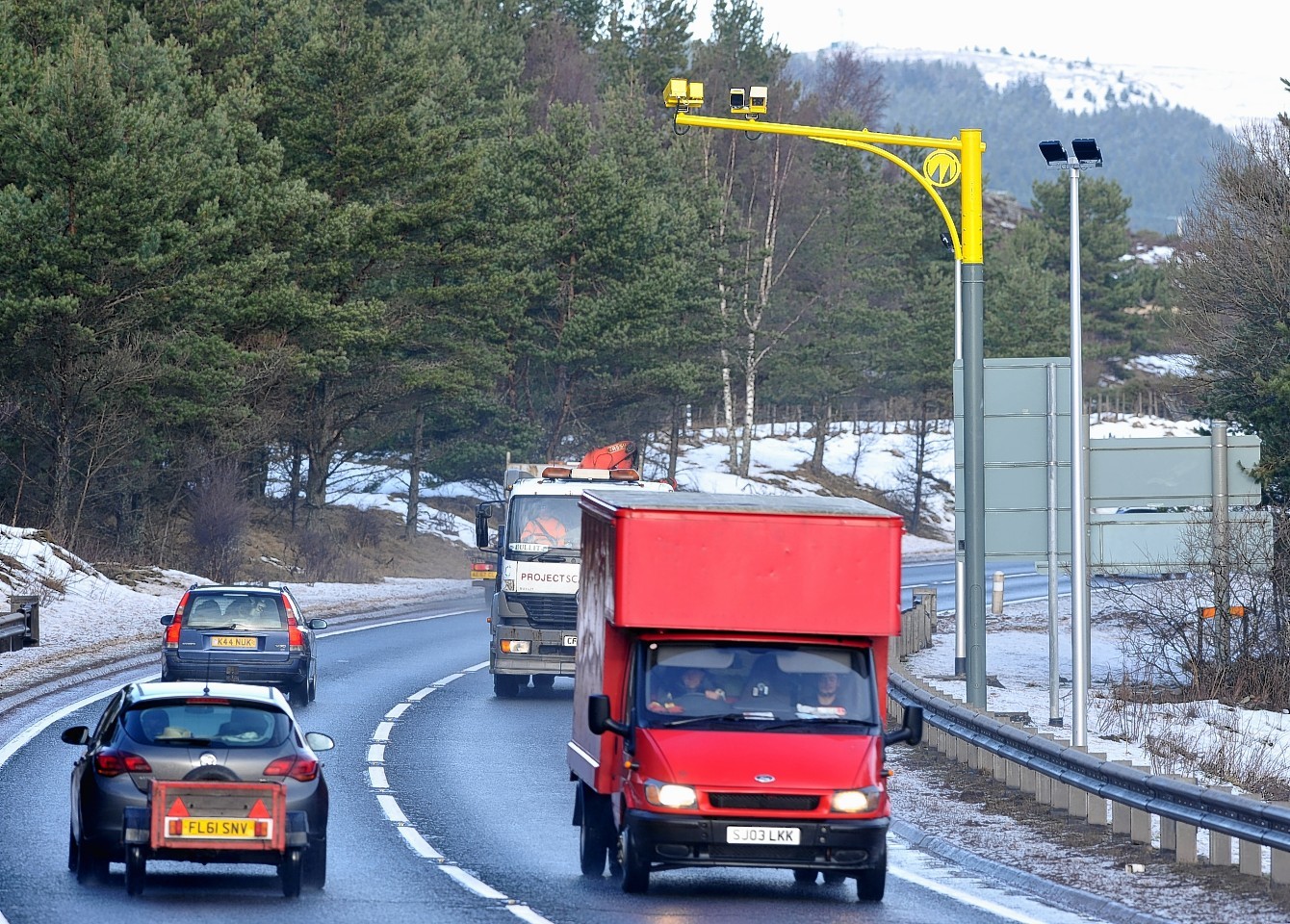Average speed cameras were controversially introduced on the A9 Inverness to Perth road in 2014.
Branded “yellow vultures” by their critics, there has been a significant reduction in crashes since they were installed on the road.
In February, statistics from the A9 Safety Group revealed the number of fatal and serious” collisions had plummeted by 25% since the devices went live, with “fatal and serious-injury casualties” reduced by almost 43% during the period.
Overall, in the last two years, the number of fatalities and casualties on the A9 between Dunblane and Inverness was down by almost 38%, compared with the baseline average, with the “fatal and serious collisions” category 32% lower, and “fatal and serious casualties” down by almost 43%.
Between October 28, 2014, when the cameras went live, and January 23 this year, there were 9,399 vehicles detected by the system exceeding the speed limit.
Before the cameras, about 12,000 drivers every year were being reported for offences.
However, there continues to be opposition to the devices from some campaigners.
Mike Burns, of the A9 Average Speed Cameras Are Not The Answer group, has maintained his objection to the measures and pointed to an increase in overall journey times on the road.
And Mr Burns has also claimed direct comparisons with previous statistics are “impossible” because of the complexities of the different methods used.
Earlier this year, the debate over the cameras hit the headlines again when former Top Gear presenter, Jeremy Clarkson, criticised the scheme in a new show filmed in the Highlands.
The presenter invoked the spirit of William Wallace as depicted in Braveheart – telling the studio audience of The Grand Tour “you can take our licences, but you can’t take our freedom”.
Mr Clarkson’s comments were subsequently criticised by road safety campaigners.
